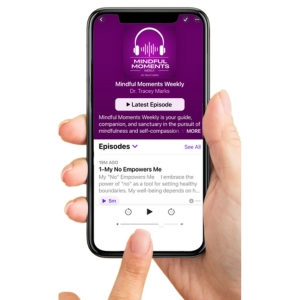Cardio vs. Strength Training: Which is Better for Your Brain?
Boost Brain Health
When it comes to exercise and mental health, many people assume that cardio is king. The idea of lifting weights may conjure images of building muscle but not necessarily improving brain health. However, the reality is far more nuanced and exciting.
Products To Support You
Mindful Moments Subscription
Positive Prompts 22oz skinny tumbler
Both cardio and strength training have unique, science-backed benefits for your brain, and understanding these differences can help you craft a routine that supports both your body and mind.
Let’s explore how these two types of exercise impact your mental health and brain function.
The Power of Cardio for Your Brain
Cardiovascular exercise includes activities like running, swimming, cycling, and brisk walking—anything that keeps your heart rate elevated over time. This type of sustained movement delivers a surge of blood flow and oxygen to your brain, creating a cascade of positive effects.
- Immediate Mood Boost: Within 30 minutes of moderate cardio, your brain releases a flood of neurotransmitters like dopamine, serotonin, and norepinephrine. These chemicals are responsible for that “runner’s high” and can improve your mood for up to three hours after exercise.
- Improved Emotional Regulation: Functional MRI studies show that regular cardio strengthens the connection between your prefrontal cortex (responsible for decision-making and emotional control) and your amygdala (your brain’s alarm system). This means better emotional regulation and resilience under stress.
- Long-term Mental Health Benefits: Regular cardio significantly reduces the risk of developing anxiety and depression. In fact, a meta-analysis found that individuals with high levels of physical activity had a 17% lower risk of developing depression compared to those with low activity levels.
How Much Cardio Is Optimal?
For mental health benefits, aim for 150-300 minutes of moderate-intensity aerobic activity per week or 75-150 minutes of vigorous activity. Be cautious about exceeding 300 minutes of vigorous exercise, as this can increase stress and anxiety.
The Brain Benefits of Strength Training
Strength training focuses on resistance—whether through weights, bands, or bodyweight exercises like push-ups and squats. While it’s known for building muscle, its brain-boosting effects are just as impressive.
- Boosts Growth Factors: Strength training stimulates the production of Insulin-like Growth Factor 1 (IGF-1), which supports brain cell survival and synaptic plasticity. This complements the effects of Brain-Derived Neurotrophic Factor (BDNF) commonly linked to cardio.
- Reduces Inflammation: Chronic inflammation in the brain is a major contributor to anxiety, depression, and cognitive decline. Research shows that resistance training lowers inflammatory markers like C-reactive protein, offering long-term protective effects.
- Enhances Cognitive Function: A 2020 review in the British Journal of Sports Medicine found that resistance training improves executive function—your ability to plan, focus, and switch between tasks—and memory, particularly in older adults.
Cardio vs. Strength: Which Is Better?
The short answer is that both types of exercise offer unique and complementary benefits. Here’s a breakdown:
- For Immediate Mood Boost: Cardio takes the lead, thanks to its rapid impact on neurotransmitter levels.
- For Emotional Resilience: Cardio excels at reducing anxiety and stress, while strength training builds self-esteem and confidence. A combination of both offers the most robust protection against depression.
- For Cognitive Function: Cardio improves memory and learning speed, while strength training enhances executive function and attention. Together, they help prevent age-related cognitive decline.
Crafting the Perfect Routine
Combining cardio and strength training is the most effective way to support your brain health. Here’s a sample plan to get you started:
For Beginners:
- Weeks 1-2: Start with 10-15 minutes of walking three times a week and basic bodyweight exercises like wall push-ups.
- Weeks 3-4: Increase walking to 20-30 minutes and add resistance band exercises.
- Weeks 5-6: Incorporate interval training and progress to more challenging strength exercises.
For Experienced Exercisers:
- Three cardio sessions (30-45 minutes each) per week.
- Two strength training sessions.
- Mix of moderate and high intensities, with at least one full rest day.
Maximizing Brain Benefits
To get the most out of your workouts:
1
Consistency Over Intensity: Moderate-intensity workouts provide sufficient benefits. Aim for 80% consistency rather than perfection.2
Prioritize Recovery: Sleep and proper nutrition are essential for consolidating exercise-related brain changes.3
Progress Gradually: Avoid burnout by increasing intensity or duration over 4-6 weeks.
Overcoming Common Obstacles
- Time Constraints: Break exercise into shorter sessions or combine activities (e.g., walking while on a call).
- Low Motivation: Schedule workouts like meetings, find a buddy, or track your mood improvements.
- Physical Limitations: Start with seated or water-based exercises and consult a physical therapist if needed.
Key Takeaway
Both cardio and strength training are powerful tools for boosting brain health. The best routine is one you enjoy and can stick with long-term. By mixing the two, you’ll harness the unique benefits of each and build a stronger, healthier brain.
In our next post, we’ll dive into how exercise helps the ADHD brain focus better. Stay tuned, and let’s keep building resilience together!



